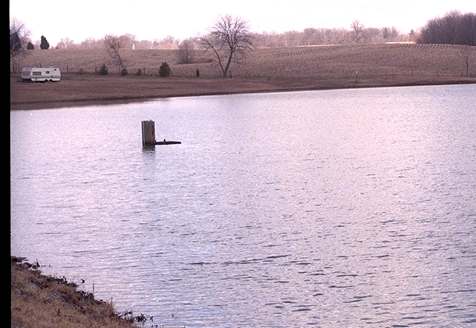|
|
Watershed Protection and Drinking Water |

Out of 4150 public water supply systems in Indiana, 61 use surface water
(lakes, rivers, or reservoirs) to provide safe, clean drinking water to
their customers. Although a small proportion of total systems, many of
Indiana's largest cities are among them including Indianapolis, Fort Wayne,
Gary, Evansville, Muncie, Kokomo, and Bloomington.
A survey conducted in 1998 and 1999 of most of these public water supply
systems found that the greatest threat to water quality comes from nonpoint
source pollution such as sediment and pesticides. Protecting the water
supply for these systems therefore means protecting the entire watershed.

To help communities start developing watershed protection plans, we have
developed maps of all Indiana public water supply
watersheds except those that use Lake Michigan or the Ohio River.
From these watershed maps we use GIS-based information to calculate watershed
size and land use for each water supply system. Information on the
water body used and population that drinks
the water can provide more information on the system you may be interested
in.
Community water supplies that use surface water can benefit by developing
a watershed protection plan to protect their water supply from current
and future contamination. Unlike those that use ground water, communities
using surface water are not required to develop a water quality protection
plan by Indiana law, but they can still benefit from planning and education.
For more information
contact Jane Frankenberger
(frankenb@purdue.edu)
or Brent Ladd (laddb@purdue.edu)
or call the Purdue Extension Safe Water office at 765-496-6331

Purdue Equal Opportunity Statement
Home | Wellhead Protection | Farm/Home *A*Syst | Drinking Water FAQs | Publications | Safe Water for Kids | Links
